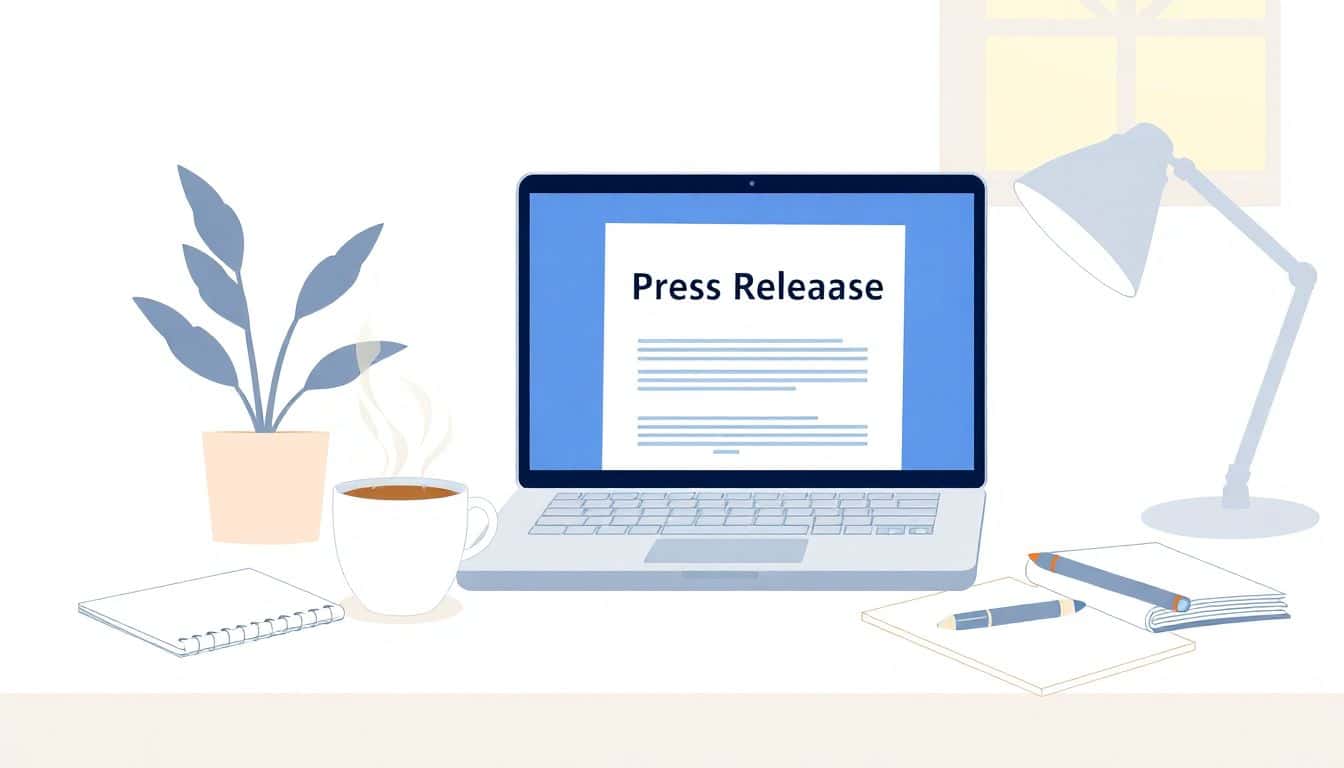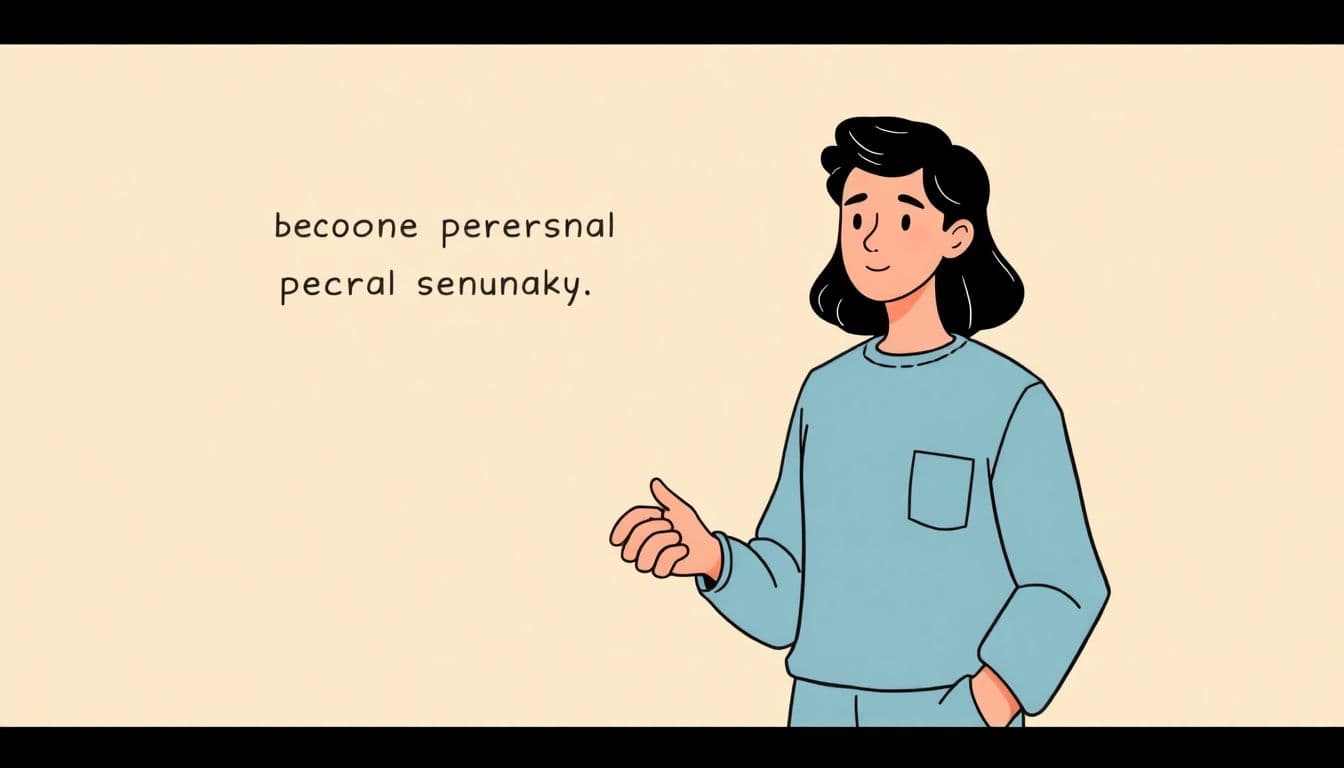Table of Contents
Writing a press release can feel overwhelming at first—I totally get it. You want to share your big news, but where do you even begin?
Don’t sweat it! Stick around, and I’ll show you exactly how to whip up a press release that’s clear, engaging, and gets your story noticed by the right folks.
Here’s how we’ll do it, step by step.
Key Takeaways
- Write a short, clear headline (60–80 characters) that summarizes your announcement plainly.
- Add date and location below headline to help journalists pick up your news easily.
- Cover who, what, when, where, and why right away in the first paragraph.
- Include solid details, data, or visuals to back up your announcement.
- Add genuine and relatable quotes from your leaders or industry experts.
- Clearly state what readers should do next—a single straightforward call-to-action.
- Place your company’s brief description (boilerplate) at the end of every press release.
- Provide direct contact info (name, email, phone) so journalists can quickly reach you.
- Distribute your release directly to relevant media and journalists in your industry niche.

Step 1: Write a Clear Headline
A good headline is like a movie trailer—it grabs attention and gives readers a quick snapshot of what the whole release is about. If your headline isn’t interesting, no one’s going to click and read further, plain and simple.
Try to keep your headline short and to-the-point—usually between 60 to 80 characters is ideal (about 6-10 words). A clear, straightforward headline beats a clever but confusing one any day. For example, “Apple Announces New iPhone 15 Release Set for September” clearly conveys exactly what people should expect.
If you’re stuck, try writing your press release first, then go back to write your headline—it might just come to you naturally that way. And if you’re always wrestling with writer’s block, using creative writing prompts can help spark some inspiration.
Step 2: Include the Date and Location
Right under your headline, always include the date and location. Why? Because journalists rely on timely and geographically relevant news, and their publication schedules depend on it. Imagine a reporter picking up your release and having to guess if this information is recent—it’s not going to fly.
So follow this simple format that professionals use:
San Francisco, CA – November 19, 2023 —
Including location helps local journalists find your news quickly. Plus, your press release looks legit and credible right away. Trust me, details matter big-time here.
Step 3: Answer the 5 Ws in the First Paragraph
Okay, so you’ve got your reader past the headline and date—congrats! Now, answer the crucial questions journalists and readers need answers to immediately: Who, What, Where, When, and Why. Do this right away in your first paragraph.
Here’s a quick rundown of how it looks:
- Who: Clearly mention your company or organization.
- What: State what’s happening—your news or announcement.
- Where: Specify a location if relevant (an event, store opening, etc.).
- When: Clearly include date and time.
- Why: Attach some brief context or reasoning. Why should readers care?
Here’s an example of how you could handle it: “XYZ Tech Inc. (Who) today announced the launch of their advanced AI-driven email optimization software (What) during the annual Email Marketing Expo in San Diego, CA (Where) on November 30, 2023 (When). This new software helps businesses significantly increase email open rates by predicting the optimal sending times (Why).”
This approach is super helpful for journalists because it immediately gives them everything they need to decide if your story’s worth their time—and journalists already rely on press releases for 73% of their organizational research, so make it count!

Step 4: Add Important Details to Support Your News
Think of your press release as a story that needs strong supporting details—not just a summary. Readers and journalists expect solid facts, figures, and context to back up what you’re saying.
Include specific data points or notable features that show why the news matters—since 68% of journalists appreciate receiving original data, market trends, and unique insights.
If your news involves a product launch, explain how it addresses real issues or helps customers save time, money, or effort.
For instance, if you’re announcing a new platform, highlight exactly how it simplifies processes or improves results—something like “Our software helps marketers send emails at the optimal moment, increasing open rates by up to 40%.”
Don’t just stop at text: remember, press releases containing multimedia content—images, infographics, or videos—garner six times more engagement than releases containing only written copy.
If your company plans to include such visual elements—like 63% of businesses do—consider adding short video clips or infographics that help journalists quickly grasp your news.
Step 5: Include Quotes From Relevant People
Adding a good quote to your press release offers credibility and a bit of personality to your announcement.
Quotes humanize your news and help convey excitement or relevance without sounding stiff or robotic.
Seek short, authentic comments from company leaders, customers, or experts within your industry; avoid clichés or overly promotional language that doesn’t feel genuine.
Keep quotes conversational and relatable, something natural-sounding like, “This new software makes email marketing simpler than ever. We’ve been using it internally and have already seen huge improvements,” said XYZ Tech CEO John Doe.
If you’re quoting industry experts or influencers, briefly explain who they are and why their input matters:
“Understanding these trends early is crucial,” noted email marketing authority Jane Doe, known for significant research on how AI is reshaping email writing.
Step 6: Provide a Clear Call to Action
A solid call-to-action (CTA) makes it clear what you want readers and journalists to do next—think “attend the event,” “sign up,” or “schedule a product demo.”
State your next-step clearly and specifically, making it easy for anyone reading to immediately take action.
If you’re inviting people to an event, include registration details, links, or directions for signing up seamlessly (without literally writing ‘Sign up here!’).
For example, you could write, “To register and reserve a seat in our Email Marketing Mastery workshop, visit the event website by November 29, 2023.”
Make sure not to confuse readers with multiple CTAs—stick to one main action that aligns directly with your announcement’s objective.
Step 7: Add Your Company Boilerplate
The boilerplate is a brief, standardized description of your company placed toward the end of every press release you issue.
The goal here is to remind readers quickly who you are, why you exist, and what makes your brand credible—all in about three to five concise sentences.
Include essential details like your company’s founding date, main business activities, areas of expertise, or notable awards or achievements.
For instance: “XYZ Tech Inc., founded in 2018, provides software solutions designed to optimize email marketing analytics. Headquartered in San Diego, CA, XYZ Tech serves leading brands across North America and was recently awarded Best Emerging Tech Company.”
Keep this section consistent across releases so journalists become familiar with your organization over time, helping with recognition and credibility.
Step 8: Include Contact Information
Date, location, and quotes cover the why and what, but contact information is vital to enable journalists to reach you directly if they have additional questions or want to pursue a story quickly.
A good contact section should include the name, phone number, and email address of the person responsible for handling media inquiries.
Providing multiple communication options ensures reporters can easily connect even on tight deadlines—it could look like this:
You can reach our PR Specialist, Alex Smith, directly at (555) 123-4567 or via email at alex.smith@xyztech.com.
Also, including a link to your company’s media or press page is helpful, as it provides reporters with additional resources and assets like logos, high-resolution images, or team bios.
Step 9: Distribute to Relevant Media Outlets
This step is about making sure your press release goes to the right journalists and publications who care about your business’s niche or subject matter—sending indiscriminately wastes your precious resources and people’s patience.
Start by creating an up-to-date list of targeted media contacts, including news channels, websites, magazines, and even blogs in your niche.
Use platforms like Cision or Meltwater to build lists based on topic, region, or beat, helping you pinpoint exactly who’s likely to cover your news.
Also, timing matters: statistics show releases sent on Thursdays achieve higher open rates, boosting your odds of gaining coverage.
To enhance visibility—since 84% of businesses consider press releases a powerful tool—leverage social sharing and media outreach strategically to engage journalists and influencers further.
If you’re not experienced enough to do a professional distribution yourself, consider using dedicated services like PRWeb or Business Wire to make it easier and efficiently reach targeted audiences.
Taking the time to distribute wisely makes all your previous hard work worthwhile and increases your chances of generating valuable media attention.
And since content sometimes comes faster when creativity flows, if you’re faced with writer’s block for news coverage, winter-themed writing prompts or even fun topics like funny writing prompts for kids can spark unexpected ideas worth developing into exciting media announcements.
FAQs
An effective headline clearly states your news in a short, engaging way. It should grab attention quickly by highlighting the key message or benefit, making journalists and readers want to learn more about your announcement.
Quotes should add value by offering insights, credibility, or personal perspectives from leaders, experts, or key stakeholders involved. Choose concise statements that reinforce your message and give journalists powerful soundbites they can readily use.
A call to action directs your readers toward the next step you want them to take, such as visiting your website, attending an event, or getting in touch. It encourages engagement, increases response rates, and supports reaching your press release goals.
Journalists expect immediate answers to who, what, when, where, and why. Clearly state key facts up front so readers quickly grasp the essential details and relevance without having to read further into the release text.



